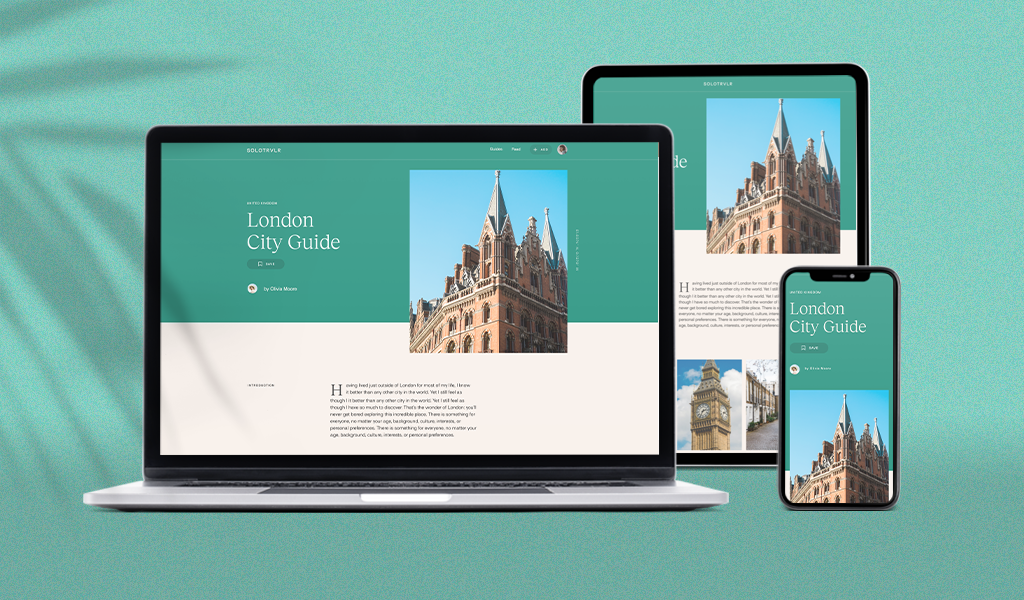A Startup Guide to Estimating MVP Cost
You've got a great startup idea. Congrats! But now what? How do you take that idea and transform it into something people will actually want to use? How do you build a product that solves a real problem for your target market?
Building a fully-fledged product can be a risky proposition. If the product flops, you would have blown up your budget and wasted a lot of time and effort. That’s why building an MVP first is important.
MVP stands for minimum viable product. An MVP is the bare-bones version of your product that you can put out into the world to test your idea and gather feedback from real users.
In this blog post, we’re going to break down the cost of building an MVP so that you can make an informed decision and know what to expect.
Let’s get started.
How much does an MVP cost?
The answer depends on the platform on which the MVP will be built, the features that will be included, and whether or not you already have a team in place. Generally speaking, however, most MVPs fall into one of three categories:
1. A simple landing page: $1,000 - $5,000
2. A functional web application: $10,000 - $50,000
3. A complex web or mobile application: $50,000 - $100,000
Of course, these are just ballpark estimates. The actual cost of building an MVP will vary depending on your specific needs and circumstances. There are also different factors that can impact the final quote.
Breakdown of MVP pricing
1. Development Costs
The first thing you need to consider when budgeting for your MVP are development costs. This includes the cost of hiring a developer (or a team of developers) to help you bring your vision to life.
The cost of hiring a developer will vary depending on their experience level, where they’re located, and how many hours they’ll need to spend working on your MVP.
While a very rough estimate, expect a 3-month MVP to range between $40K - $100K. Depending on your project, there may also be the possibility to do something clever and quick within a week or two, which may bring the cost well below that range.
If you're working with an experienced development team, they will be able to give you a more accurate estimate once they understand your product requirements.
If you’re working with a tight budget, you may want to consider finding a developer who is willing to work for equity instead of cash, or perhaps a combination of both with a reduced rate.
This means that they would receive a certain percentage of ownership in your company in exchange for their services. It could be a great way to save on development costs, but it’s important to be clear about expectations and timelines so that everyone is on the same page from the start.
2. Design Costs
In addition to development costs, you also need to consider design costs when building your MVP. This includes the cost of hiring an UX & UI designer to create a visually appealing interface and a seamless user experience for your product.
As with developers, the cost of hiring a designer will vary depending on their experience level and where they are located.
If you have some basic design skills, you may be able to create the initial designs for your MVP yourself which could cut down on costs. However, it’s important to remember that first impressions are everything when launching a new product, so if you don’t feel confident in your design skills it may be worth investing in someone who does.
In addition, make sure to run the designs past an experienced developer - you don’t want to sell something that is not technically feasible.
Bear in mind that most of the effort in the case of design is having meetings to come up with simple solutions for complex problems, not mocking the screens and wireframes. Your designer should guide you through this process and help you shape your idea if they have a good understanding of user experience.
In general, a ballpark estimate for design of a relatively simple product with ~15 - 30 screens should be:
- Between $5K - $10K if using an agency
- Around ~$5K if using an experienced freelancer
3. Hosting Costs
Another factor to consider when building an MVP is hosting costs. This is the cost of renting “space” and “processing power” (CPU time) on a server where your product will live online.
The amount you pay for hosting will depend on how much traffic your product gets, and how complex your app is.
If you’re just starting out, you may want to consider using one of the cheaper hosting options like Firebase. However, if your product starts getting a lot of traffic then you may need to upgrade to a more expensive technology or hosting plan in order to ensure that your product is able to scale.
You might need an experienced developer to help you with this step, because hosting massively depends on how complicated your product is and what technology you incorporate into it (ex: Machine learning can be computationally expensive).
As general ballpark figures, you can expect to pay:
- For static site with basic CMS functionality with under 200 users / month: Free with Firebase
- For more complex MVPs with under 200 users / month: $200 - $500 / month
- For MVPs with computationally expensive functions (ex: Video processing, machine learning, scraping massive datasets): $1500 - $5000 / month
There are also different calculators available that you can use to get a more accurate estimate. We recommend the following:
- For simple MVPs: Firebase calculator
- For more complex MVPs: AWS pricing calculator
4. Marketing Costs
Finally, don’t forget to budget in the marketing aspect when planning your MVP. Even though your product is in its early stages, it’s still important to get the word out there about what you're offering and why people should care.
There are plenty of free and low-cost marketing channels available like social media, PR and blogging. And If you have the budget available, you should also consider paid advertising as a quick way to gain initial traction.
Whether you are in the B2C or B2B space, generally between $10K - $20K is a decent runway to determine whether your product will have some initial traction.
- If you’re in the B2C space: Ads, inbound marketing and some cold outreach on platforms like Instagram may be enough to get your first hundred users (which can be extremely valuable to acquire funding).
- If you’re in the B2B space: Cold outreach, networking and attending events may work better for you at this stage. Consider spending money on a lead generation campaign. You should aim to get your first big 2 - 3 clients with this budget.
If you need some inspiration, you can find our MVP success story with SoloTrvlr below. A platform founded by an ex-Google product owner empowering female solo travellers to explore the world with confidence.

MVP Success Story
6 ways to bring down MVP development cost
1. Keep it simple
When you're first starting out, it's easy to get caught up in trying to build the perfect product. However, perfection is often the enemy of progress. Focus on the core features that will make your product unique and appealing to your target market.
The whole point of an MVP is to keep things as simple as possible - both in terms of features and design. This will help you simplify your development process and save money in the long run.
2. Focus on the essentials
When prioritising features for your MVP, focus on those that are absolutely essential for your product to work well. Ask yourself what absolutely must be included in order for the product to be usable. Everything else can be added later on.
If you're not sure about a particular feature, leave it out of the MVP altogether. The most important thing is to get your product into the hands of users as quickly as possible so that you can gather feedback and iterate.
3. Component Driven Architecture
When planning out your project, make sure that you have plenty of reusable building blocks you can plug across as many screens as possible. This saves developers time from having to redesign every single screen, and generally makes the backend side of development easier too.
4. Third-party libraries and APIs
Getting your project off the ground as quickly as possible may mean using third-party APIs or styling libraries to avoid reinventing the wheel.
While this gets the job done faster, you would really need to work with your developers to understand what is easy to customise and what is hard, in order to get any benefit from this approach. This might mean you may have to agree to:
- Design compromises (UI)
- User experience compromises
- Missing functionality (a third-party API or library doesn’t support it, and it might not be easy to drop it in)
- Functionality that doesn’t completely align with your vision
In our experience, this approach can save you time and money, if you are flexible and willing to compromise on certain aspects of your product.
5. Leverage modern frameworks
Can you use existing frameworks instead of developing everything from scratch? There are off-the-shelf solutions that can do plenty of the hard work, without breaking the bank.
Here at All Front, we like to use Angular or React as frontend frameworks, with Firebase, or Prisma + Node for the backend.
6. Work with a lean team
One of the biggest expenses associated with developing an MVP is hiring a team of experts to help you bring your product to life. However, you don't necessarily need a large agency to get the job done.
If possible, try to work with a smaller software development agency who can provide the specialised services you need at a cost-effective price point, without compromising on quality.
If you are hiring developers and have no technical expertise, it’s probably best if you have someone you can trust and know has delivered in the past to help you with the hiring process.
Keep in mind that developers may be subjective. A developer who is more familiar with Angular rather than React is likely to recommend Angular for your project, regardless of which may be the better choice.
That’s why you should get multiple opinions, or work with a software architect (instead of a senior developer) to help you in the early stages of decision making. We cover this topic in more detail in our guide on how to hire dedicated developers, which you may find useful.
Final Thoughts
Estimating MVP cost can be tricky, but it's important to have a general idea of how much you'll need to spend. Development, design, hosting and marketing are all factors that will affect your bottom line.
Depending on the scope of your project, you could end up spending anywhere from $1,000 to $100,000. But there are also ways to cut down MVP costs like being strategic about which features you include and what tech stack you choose.
Remember, an MVP doesn’t have to be perfect - it just needs to be good enough to test your hypothesis. And if your product is successful, you can always add more features later on down the road.
As always, feel free to reach out if you have any questions about starting your own MVP project.




